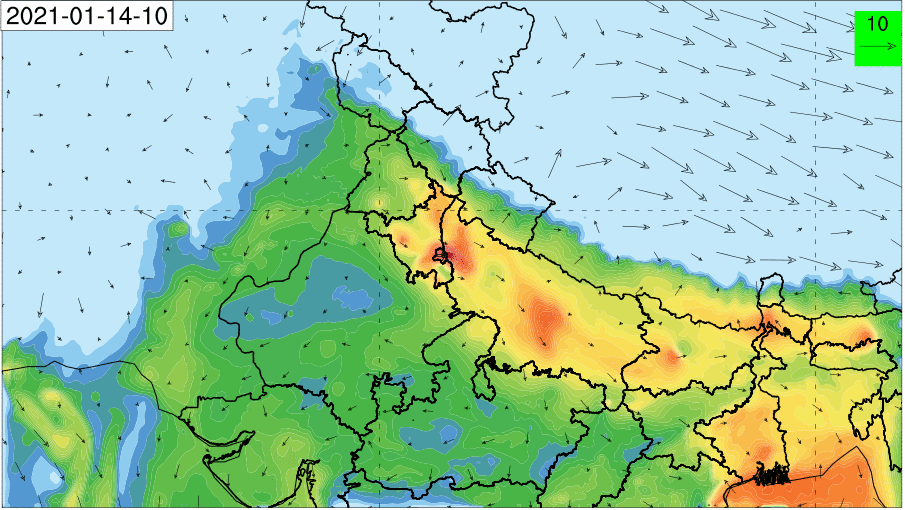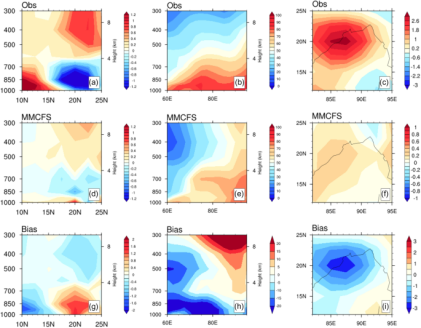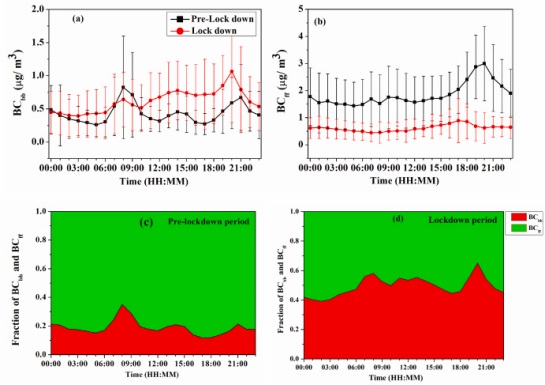Training in AI/ML Videos
Seminars / Lectures
IITM Publication Highlights
The fingerprint of Indian Ocean rain and river water in salinity and circulation
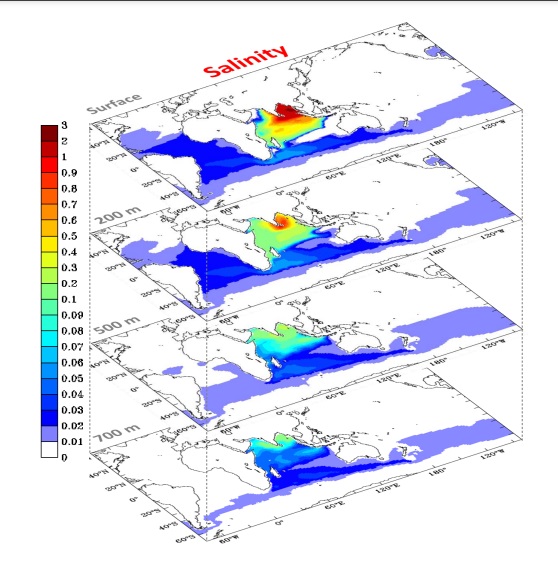 The tropical Indian Ocean receives the world's most significant tropical ocean rain and river runoff per unit area. The 3-dimensional spreading of Rain and River Water (RRW) entering the tropical Indian Ocean and associated salinity and circulation anomalies are explored for 60 years using ocean reanalysis data tailored to a tracer transport model. RRW mixes in the surface, subducts and spreads, offering a dilution in salinity and expansion in dynamic heights. RRW offers a net transport tendency of water from the Bay of Bengal to the Arabian Sea at a rate of 0.80 ± 0.14 Sv year−1.
The tropical Indian Ocean receives the world's most significant tropical ocean rain and river runoff per unit area. The 3-dimensional spreading of Rain and River Water (RRW) entering the tropical Indian Ocean and associated salinity and circulation anomalies are explored for 60 years using ocean reanalysis data tailored to a tracer transport model. RRW mixes in the surface, subducts and spreads, offering a dilution in salinity and expansion in dynamic heights. RRW offers a net transport tendency of water from the Bay of Bengal to the Arabian Sea at a rate of 0.80 ± 0.14 Sv year−1.
Valsala V., Deep-Sea Research I, 190: 103912, December 2022, DOI:10.1016/j.dsr.2022.103912, 1-10
Read MoreProjection of lightning over South/South East Asia using CMIP5 models
 Product of Bowen ratio with the sum of precipitation rate and evaporation rate has been used as proxy to evaluate the seasonal and annual spatial distributions of lightning flash rate over South/Southeast Asian region (60–120° E, 0–40° N) with 9 models from the Coupled Model Inter-comparison Project-Phase 5 (CMIP5). The model-simulated mean LFR with each model is positively correlated with the satellite-observed LFR on both seasonal and annual scales. The satellite-observed LFR is correlated with the ensemble mean LFR of the models with a correlation coefficient of 0.93 over the region. The model-simulated LFR has also been used for projection of lightning in the late twenty-first century.
Product of Bowen ratio with the sum of precipitation rate and evaporation rate has been used as proxy to evaluate the seasonal and annual spatial distributions of lightning flash rate over South/Southeast Asian region (60–120° E, 0–40° N) with 9 models from the Coupled Model Inter-comparison Project-Phase 5 (CMIP5). The model-simulated mean LFR with each model is positively correlated with the satellite-observed LFR on both seasonal and annual scales. The satellite-observed LFR is correlated with the ensemble mean LFR of the models with a correlation coefficient of 0.93 over the region. The model-simulated LFR has also been used for projection of lightning in the late twenty-first century.
Chandra S., Kumar Praveen, Siingh D., Roy I., Victor N.J., Kamra A.K., Natural Hazards, 114, October 2022, DOI:10.1007/s11069-022-05379-8, 57–75
Read MoreMethane sources from waste and natural gas sectors detected in Pune, India, by concentration and isotopic analysis
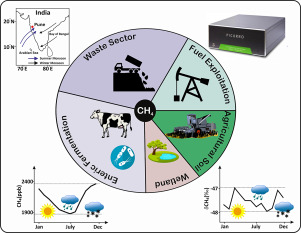 Methane (CH4) is a potent greenhouse gas and also plays a significant role in tropospheric chemistry. High-frequency (sub-hourly) measurements of CH4 and carbon isotopic ratio (δ13CH4) have been conducted at Pune (18.53°N, 73.80°E), an urban environment in India, during 2018–2020. Methane concentration but not the isotopic values show seasonality in Pune. Isotopic analysis shows waste sector is the significant source of methane in Pune. No lockdown effect was found on methane records.
Methane (CH4) is a potent greenhouse gas and also plays a significant role in tropospheric chemistry. High-frequency (sub-hourly) measurements of CH4 and carbon isotopic ratio (δ13CH4) have been conducted at Pune (18.53°N, 73.80°E), an urban environment in India, during 2018–2020. Methane concentration but not the isotopic values show seasonality in Pune. Isotopic analysis shows waste sector is the significant source of methane in Pune. No lockdown effect was found on methane records.
Metya A., Datye A., Chakraborty S., Tiwari Y.K., Patra P.K., Murkute C., Science of The Total Environment, 842: 156721, October 2022, DOI:10.1016/j.scitotenv.2022.156721, 1-15
Read MoreExtreme sea level rise along the Indian Ocean coastline: observations and 21st century projections
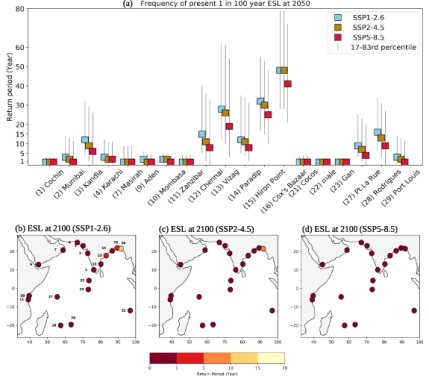 Anthropogenic sea-level rise poses challenges to coastal areas globally. The combined influence of rising mean sea level (MSL) and storm surges exacerbate the extreme sea level (ESL). Increasing ESL poses a major challenge for climate change adaptation of nearly 2.6 billion inhabitants in the Indian Ocean region. The study highlights an important policy-relevant message: strong mitigation and adaptation measures are needed along the Indian Ocean coastline as ESL100 events can occur annually or even less than a year along the densely populated coastline, irrespective of the future GHG emission pathways and socio-economic conditions.
Anthropogenic sea-level rise poses challenges to coastal areas globally. The combined influence of rising mean sea level (MSL) and storm surges exacerbate the extreme sea level (ESL). Increasing ESL poses a major challenge for climate change adaptation of nearly 2.6 billion inhabitants in the Indian Ocean region. The study highlights an important policy-relevant message: strong mitigation and adaptation measures are needed along the Indian Ocean coastline as ESL100 events can occur annually or even less than a year along the densely populated coastline, irrespective of the future GHG emission pathways and socio-economic conditions.
Sreeraj P., Swapna P., Krishnan R., Nidheesh A.G., Sandeep N., Environmental Research Letters, 17: 114016, October 2022, DOI:10.1088/1748-9326/ac97f5, 1-15
Read MoreNew Publications
Atmospheric turbulence characteristics in the troposphere and lower stratosphere of core monsoon zone
Nair Meenu R., Sunilkumar K., Singh V.P., Pandithurai G., Kalapureddy M.C.R., Atmospheric Research, 279: 106382, December 2022, DOI:10.1016/j.atmosres.2022.106382, 1-14
Why coupled general circulation models overestimate the ENSO and Indian Summer Monsoon Rainfall (ISMR) relationship?
Das Renu S., Rao Suryachandra A., Pillai P.A., Srivastava Ankur, Pradhan M., Dandi R.A., Climate Dynamics, 59, November 2022, DOI:10.1007/s00382-022-06253-w, 2995–3011
Compensatory effect of biomass burning on black carbon concentrations during COVID-19 lockdown at a high-altitude station in SW India
Mukherjee Subrata, Verma A., Meena G.S., Kodoli S., Buchunde P., Aslam M.Y., Patil R.D., Panicker A., Safai P.D., Pandithurai G., Atmospheric Pollution Research, 13: 101566, October 2022, DOI:10.1016/j.apr.2022.101566, 1-10
Characterization of carbonaceous aerosols during the Indian summer monsoon over a rain-shadow region
Jayachandran V., Safai P.D., Soyam P.S., Malap N., Bankar S.P., Varghese M., Prabhakaran Thara, Air Quality Atmosphere and Health, 15, October 2022, DOI:10.1007/s11869-022-01211-1, 1713–1728
PDF Publisher LinkIITM Events
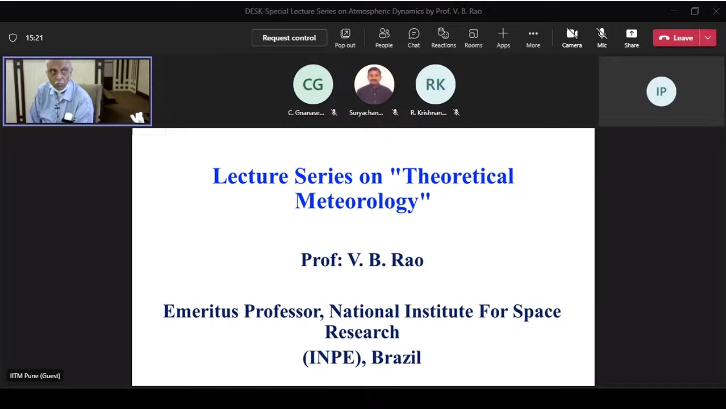
DESK-Special Lecture Series on Atmospheric Dynamics
(14, 16 and 18 November 2022)
A Special Lecture series on Atmospheric/Monsoon Dynamics has been arranged on the following specific topics:
- Discovery of Neutral Rossby Waves
- Necessity of Instability Theories
- Breaks in Monsoons.

Vigilance Awareness Week
(31 October- 6 November 2022)
The observance of vigilance awareness week commenced from 31st October 2022 with the Integrity pledge. Employees were encouraged to take the e-pledge from CVC website. Essay, poster, online quiz and debate competitions were arranged during the week. At the concluding function on 4 November 2022, Ms. Pournima Gaikwad, DCP, Pune gave a talk on the theme of the vigilance week. Prizes were distributed to the winner of various competitions.
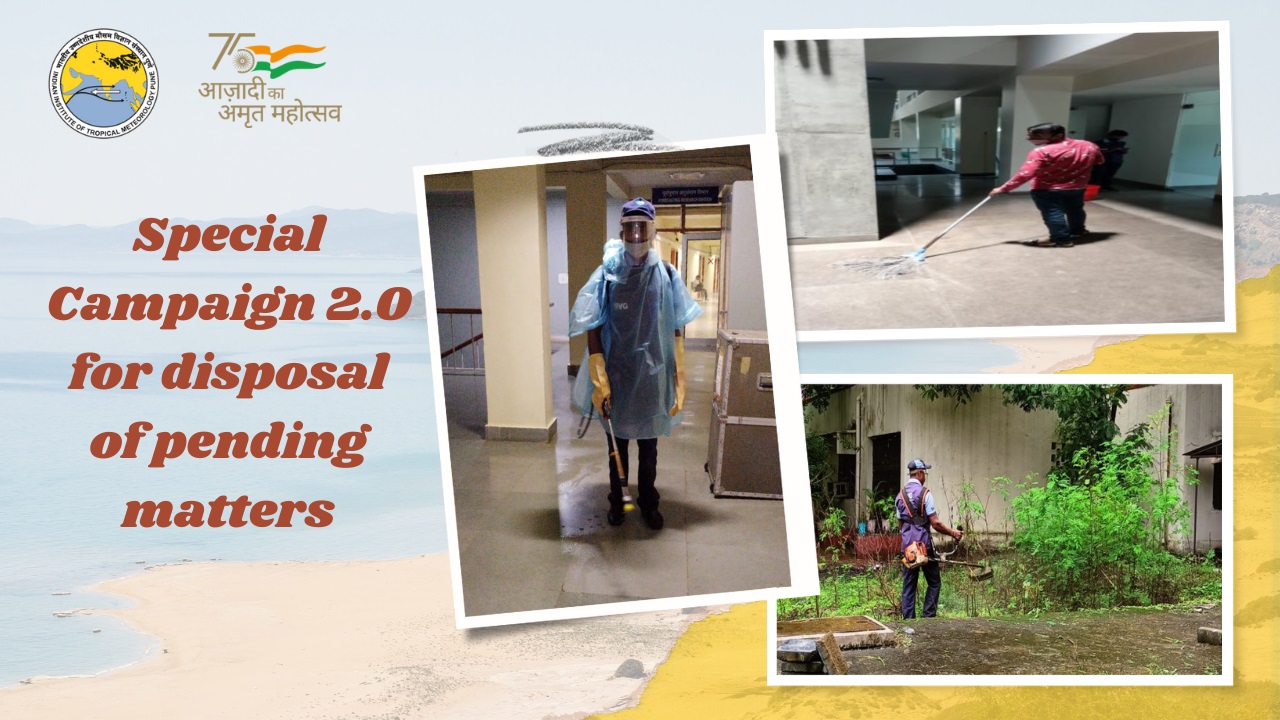
Special Campaign 2.0 for Disposal of Pending Matters
(2-31 October 2022)
Special Campaign for Disposal of Pending Matters is being carried out at the Institute from 2-31 October 2022. Under this campaign Institute ensured timely and effective disposal of Public Grievances. Number of files were reviewed/ weeded out, space cleared and revenue generated through office scrap disposal.
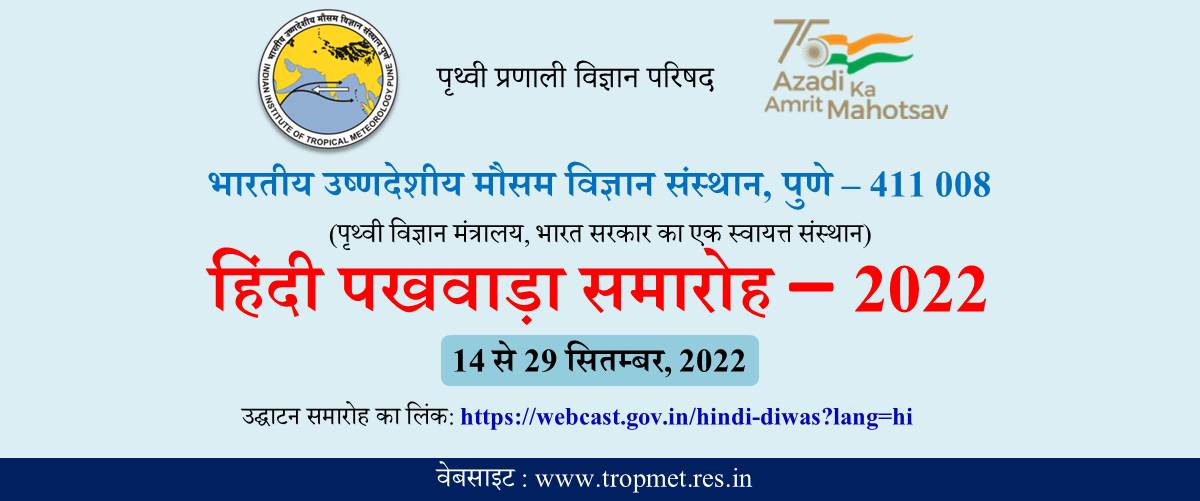
हिंदी पखवाडा समारोह -2022
(14-29 सितंबर 2022 )
संस्थान में दिनांक 14 से 29 सितंबर 2022 के दौरान हिंदी पखवाड़ा समारोह मनाया गया । पखवाड़े के दौरान विभिन्न विषयों पर अनेक प्रतियोगिताएं आयोजित की गई । इस पखवाड़े के अंतर्गत संस्थान के हिंदी पुस्तकालय के पाठकगण वैज्ञानिकों द्वारा पढ़ी गई साहित्यिक कृतियों के समीक्षा विडियों एक श्रृंखला के रूप में प्रदर्शित किए गए।



